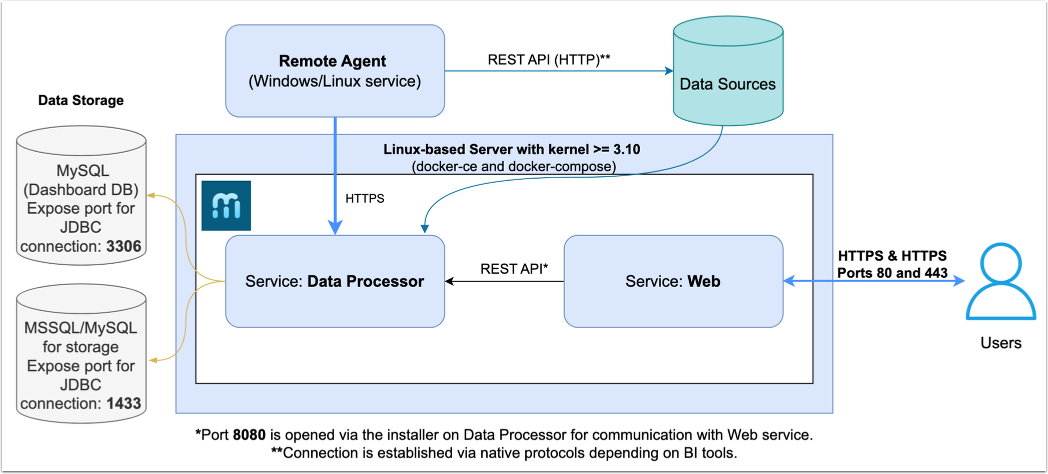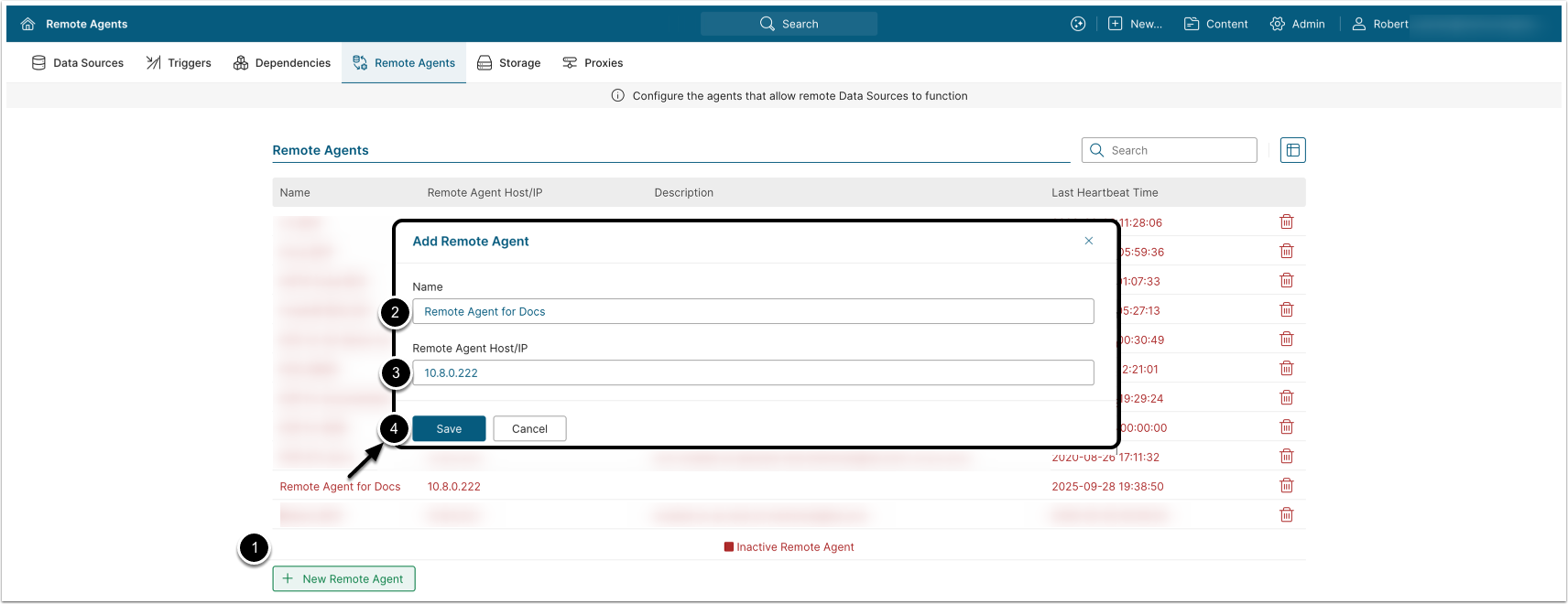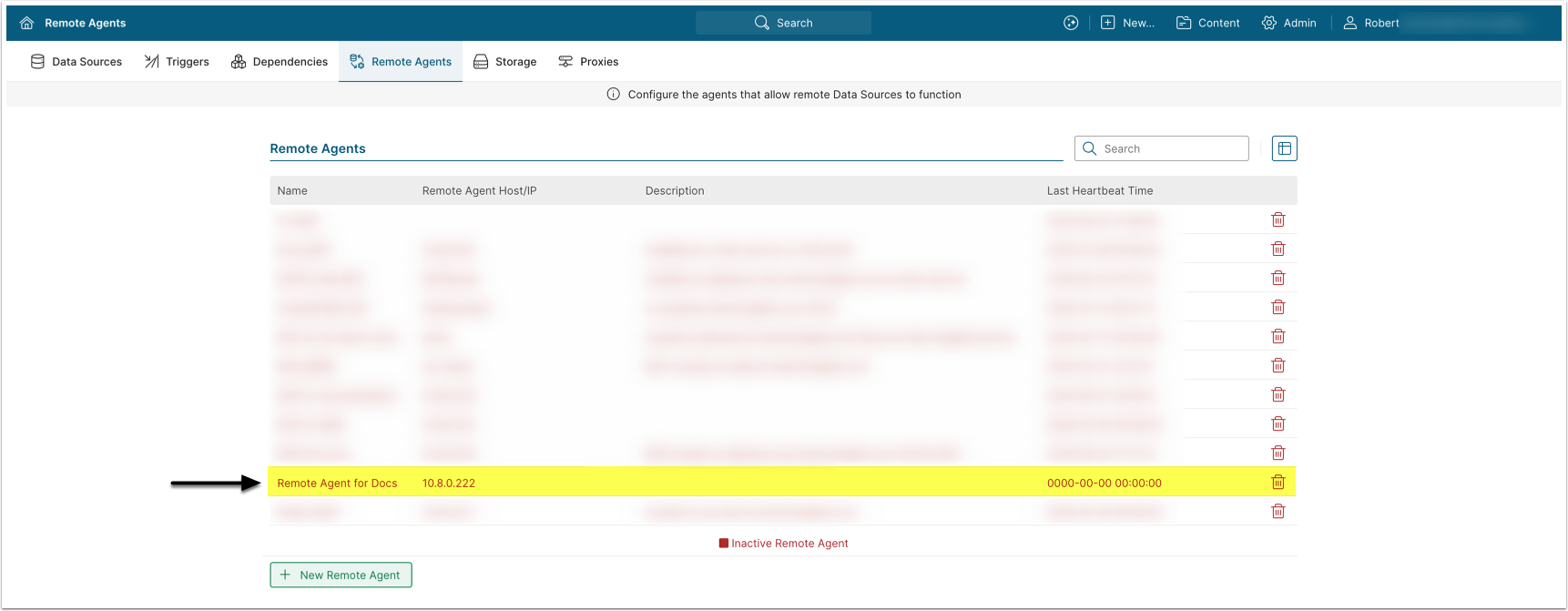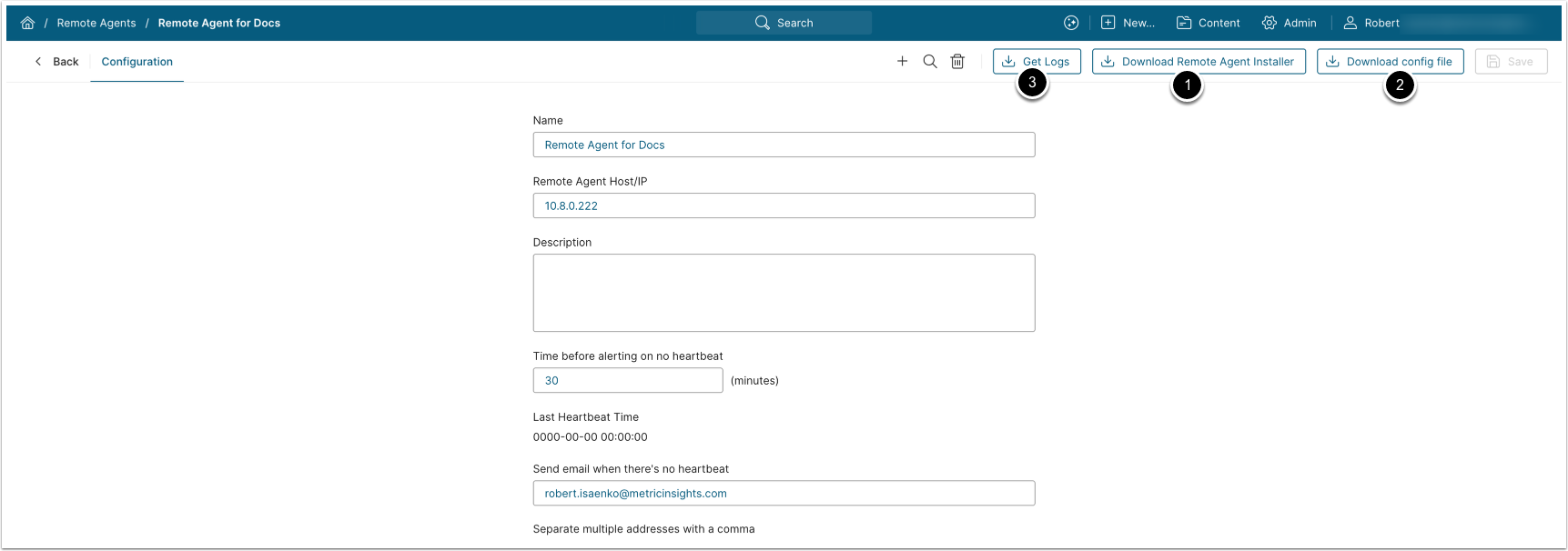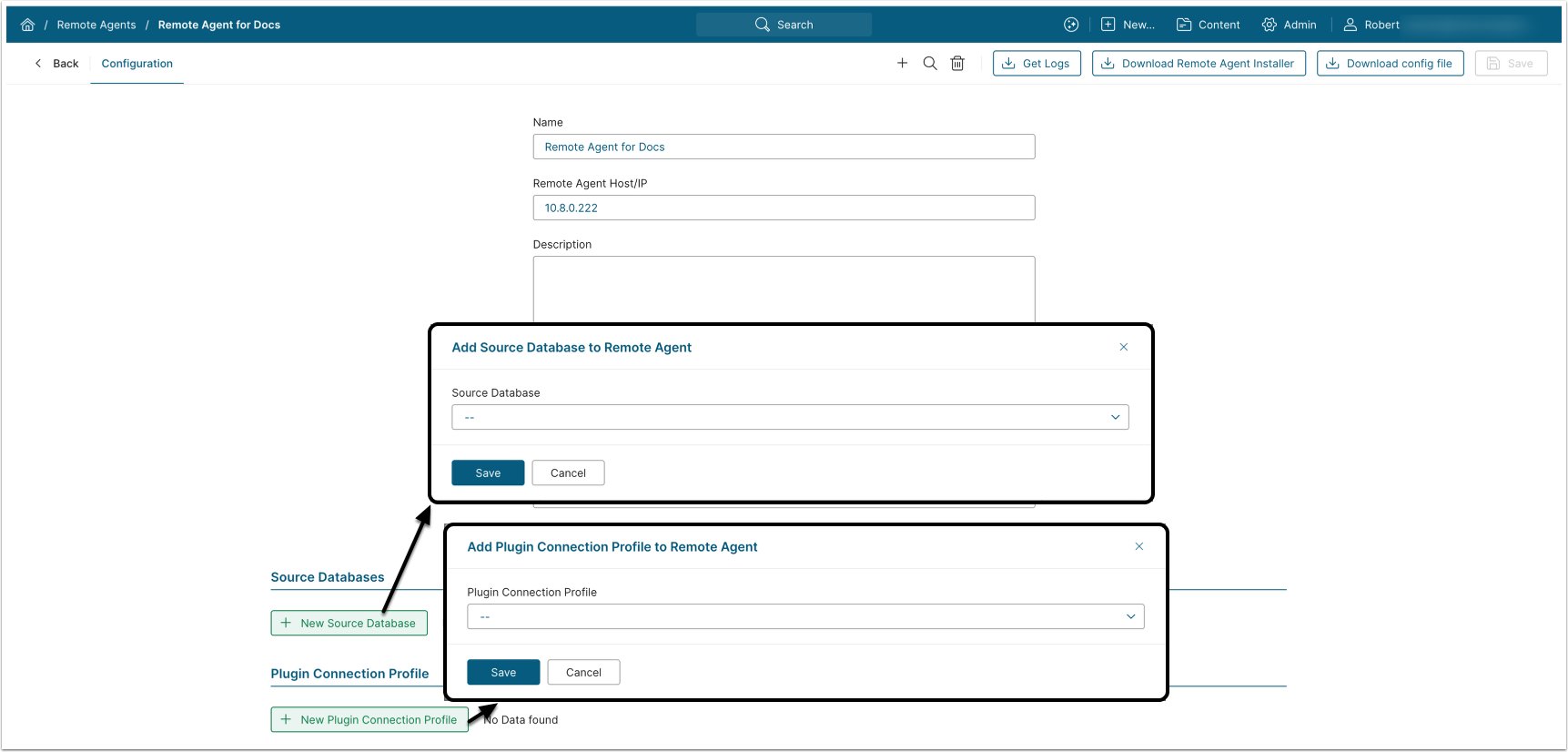RDP has been renamed to Remote Agent in 7.1.2.
A Remote Agent is a Windows-based service that allows Metric Insights to connect to data sources requiring Windows integrations or located behind a firewall separating them from the platform. This article provides an overview of the Remote Agent service along with the instructions on configuring it in the Metric Insights application. Once you have configured the Remote Agent in Metric Insights, proceed with installing it on Windows server.
Table of contents:
NOTES:
- If you are upgrading to a new version of Metric Insights and already have a functioning Remote Agent, make sure to upgrade it as well.
- See Upgrading a Remote Agent on Windows Servers (v7.1.2+);
- If you are using an SSL certificate from an internal authority, add the certificate to JDK keystore after the Remote Agent upgrade.
- For troubleshooting tips, see Troubleshooting Remote Agent (v7.1.2+).
- Remote Agent installer includes OpenJDK.
- For MI prior to v7.1.2: See Configuring a Remote Data Processor (prior to v7.1.2).
Overview
NOTE: Beginning in v7.1.0, port 32550 no longer needs to open on the Local Data Processor.
The main functions of the cluster are:
- Collecting data with plugins
- Saving the collected data to a storage
The cluster consists of two node types which communicate with each other via the TLS protocol:
- Local Data Processor (Main node) - a docker container
- Remote Agent - a Windows service
Local Data Processor performs the following functions:
- Communicates with the UI part of the MI application (it contains a REST API which is used for communication with the web container)
- Communicates with the databases: MySQL Dashboard Database (contains metadata) and MSSQL/MySQL Storage
- Has a local data collector
Remote Agent communicates with Data Sources behind firewall and Data Sources that use Windows API.
1. Create a New Remote Agent Profile
Access Admin > Collection & Storage > Remote Agents
NOTE: The UI and some fields might be displayed differently if you are using an older version of Metric Insights. Please ignore any configuration details for fields not present in your version of the application.
- [+ New Remote Agent]
- Enter a Name for your Remote Agent
- Remote Agent Host/IP:enter the hostname or the IP address of the machine where the Remote Agent is installed
- [Save]
3. Download and Run Remote Agent Installer on Your Server
- [Download Remote Agent Installer] and install Remote Agent on your server
- See the article regarding Installing a Remote Agent on Windows Servers (v7.1.2+).
- You can [Download config file]
dp-<hostname>.jsonseparately without downloading the whole installation package, if your configuration needs to be updated or if you are running multiple Remote Agent services - Click [Get Logs] to view the log file, or alternatively access log files manually:
- Access
dataprocessorcontainer cd /opt/mi/logs/:application.log- data processor log fileinsight.log- data collector log file
cd /opt/mi/logs/container/:-
tomcat-access.log- a list of REST API queries
-
- Access
